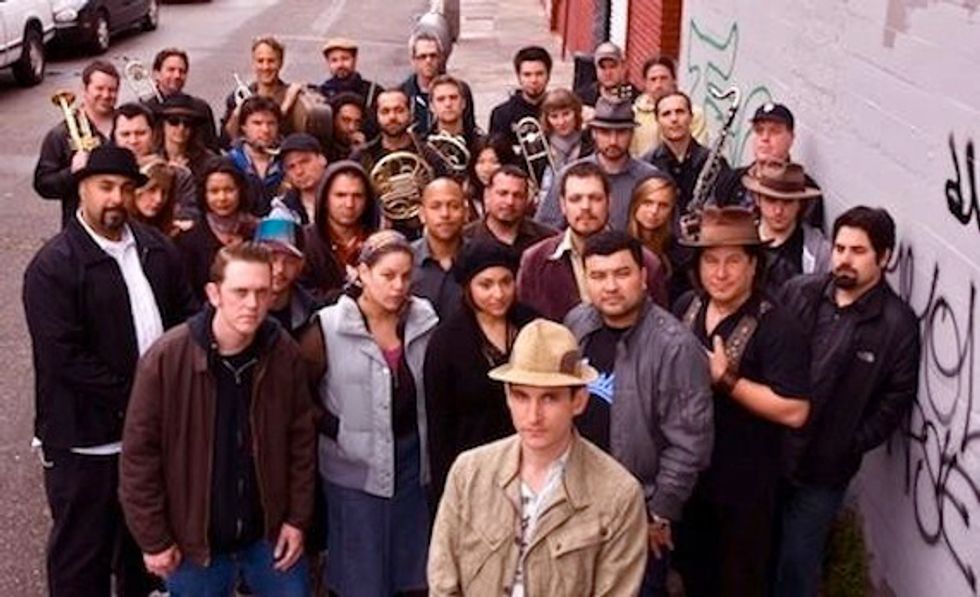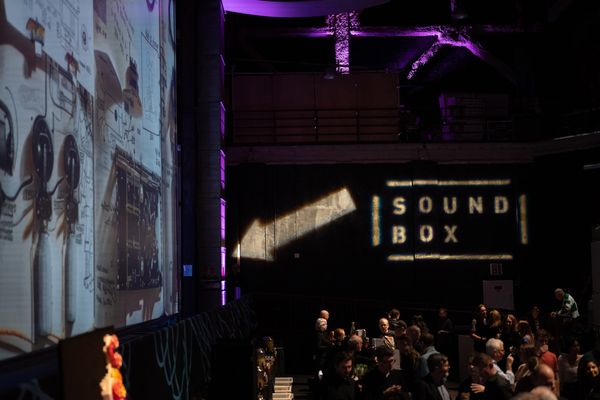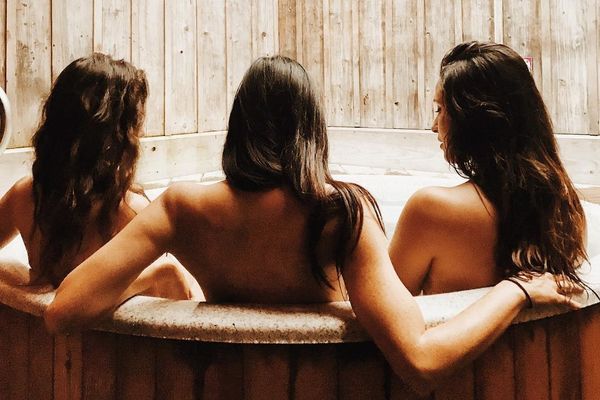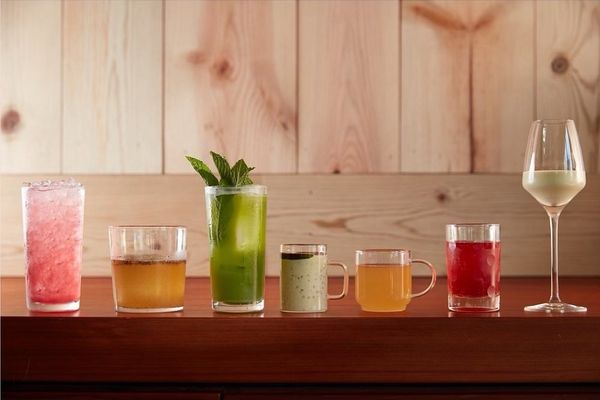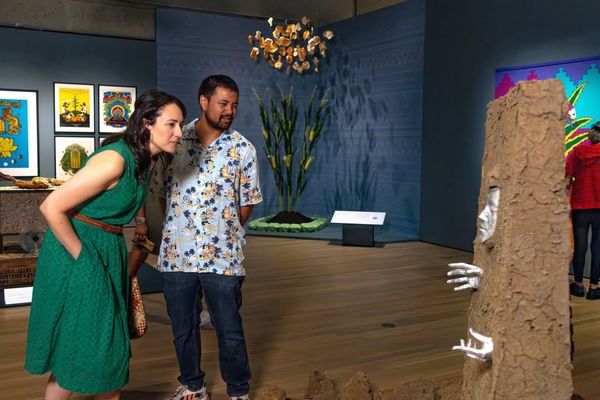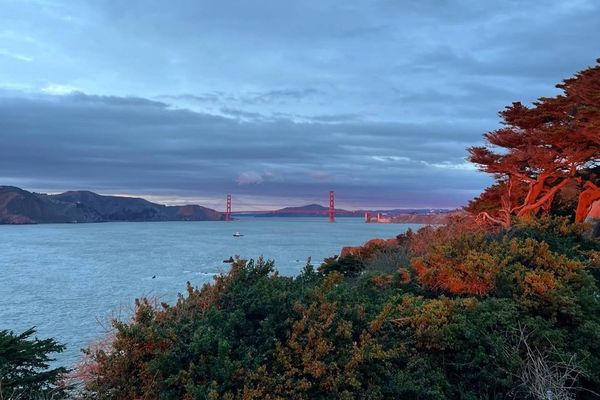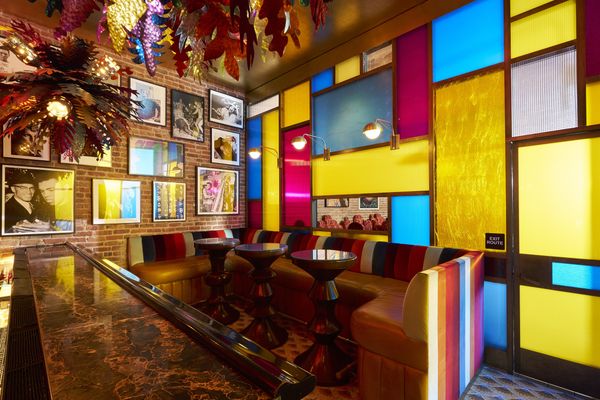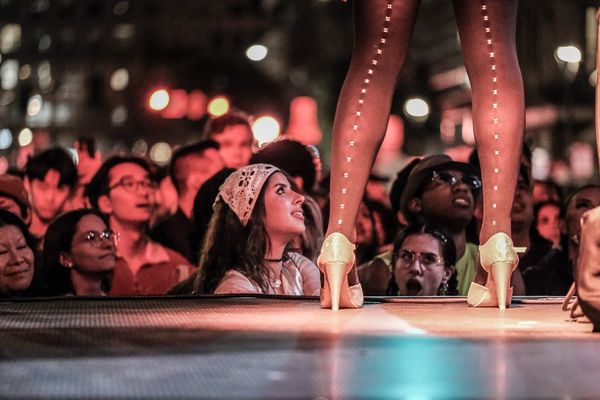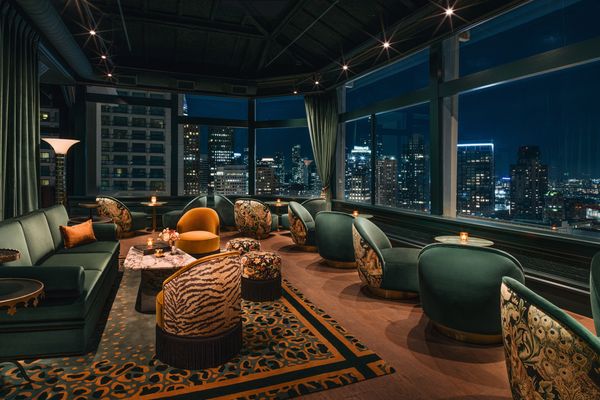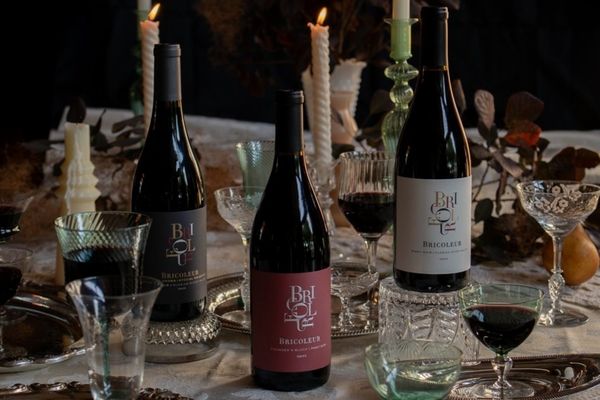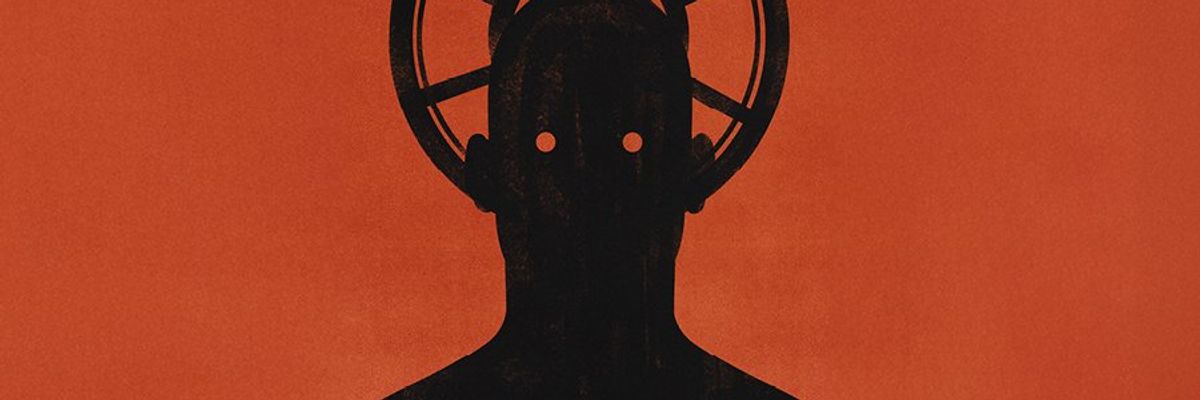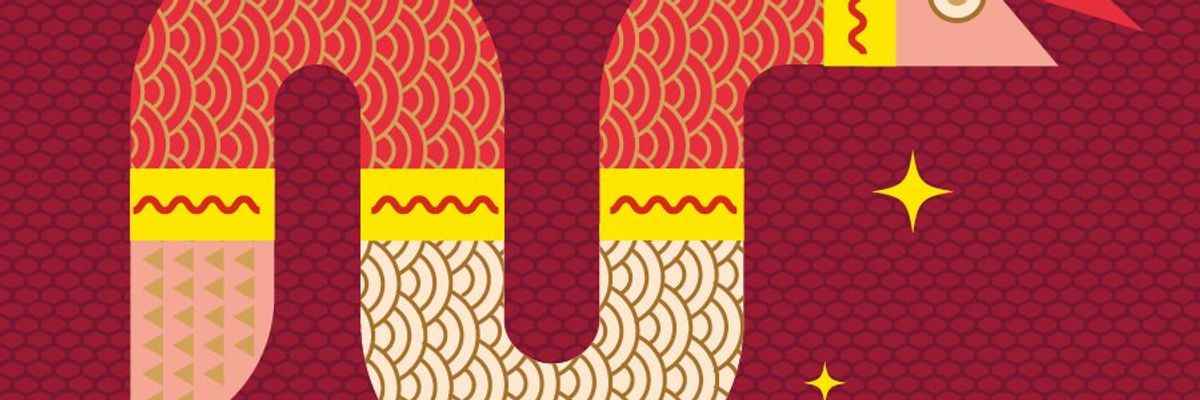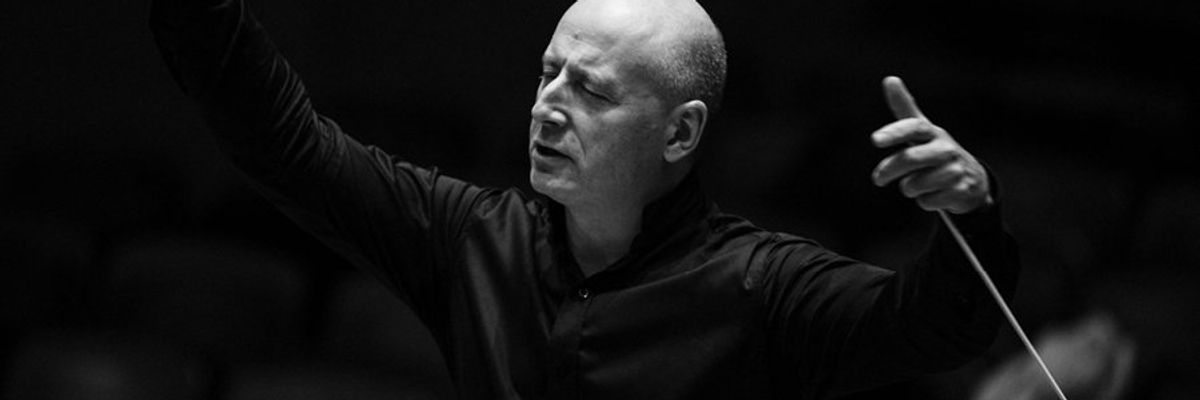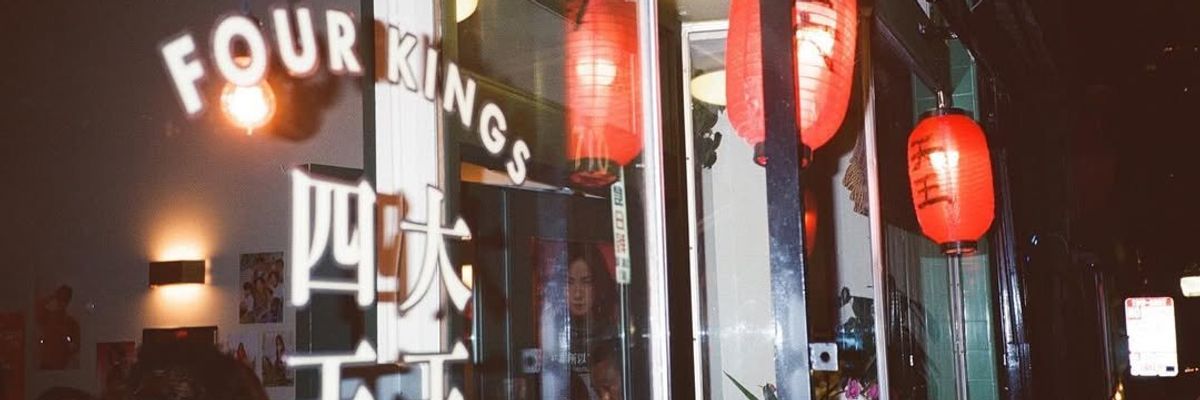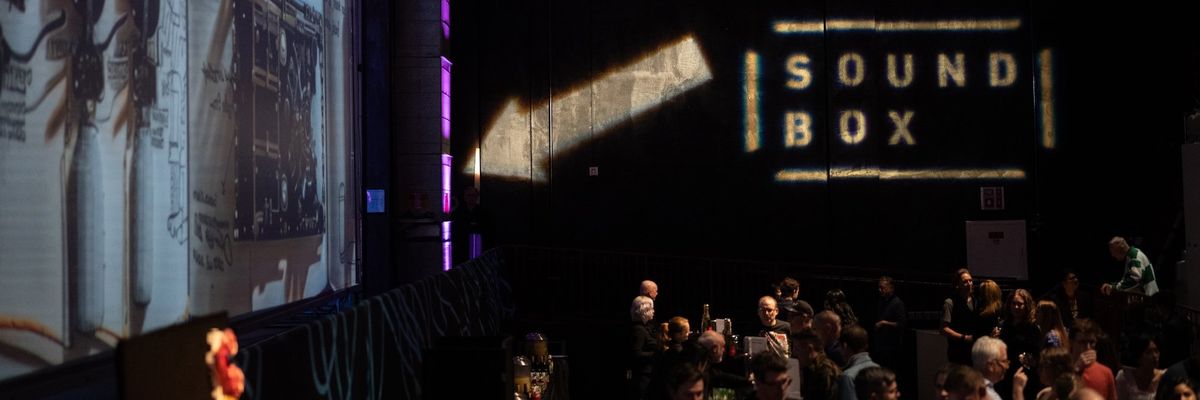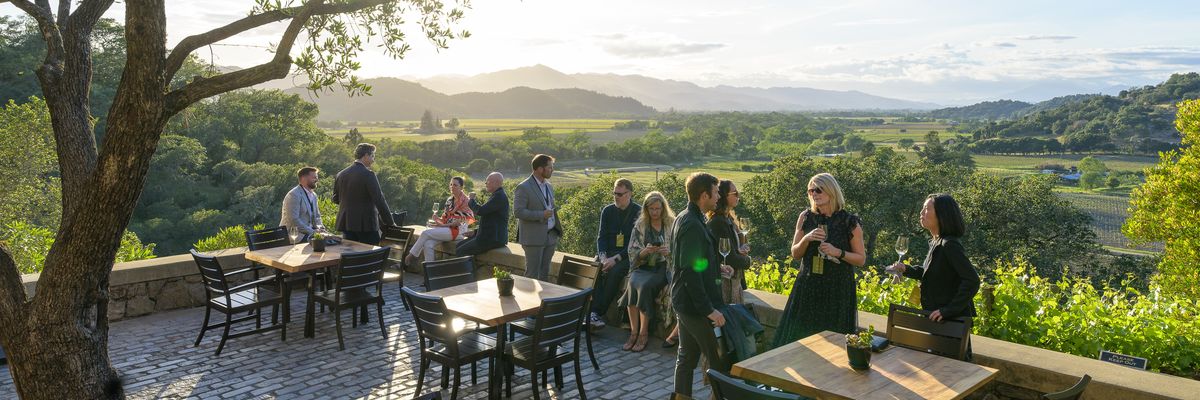When it comes to jazz, Adam Theis can’t and most certainly won’t stop. The multi-instrumentalist (horns, electric bass, bass, tuba, and trumpet) and his much praised jazz collective The SF Jazz Mafia (named SF Weekly’s best weekly music night multiple times) have had a busy run in the past few years. In 2010, the group, headed by Theis, debuted their heavily lauded symphony entitled “Brass, Bows, & Beats,” a stunning effort in the field of hip-hop-meets-classical (yes, such a thing does exist). Theis’ hip-hop credentials don’t end there—he has been known to work with rap luminaries as the legendary KRS-ONE and Bay Area hip-hop stalwarts Hieroglyphics. He’s also collaborated with singer-songwriter Liz Phair, ska outfit The Specials, and the incredible Roy Ayers. And last year, the group came out with symphony #2 called “The Emperor Norton Suite,” which was performed at Central Park’s famed Summer Stage, the Playboy Jazz Festival at the Hollywood Bowl, and the Newport Jazz Festival. Not too shabby.
The Mission resident and Sonoma native and his crew have much to celebrate, and you’ll be able to catch their brand of derivative jazz in action on Sat. 11/17 at the vaunted Fillmore Auditorium where they’ll be celebrating their 12 years in business along with the Realistic Orchestra, The Shotgun Wedding Quintet, Theis’ Subharmonic, Aima The Dreamer, DJ Qbert and many more. But first, a little inside scoop: Theis talked to 7x7 about the origins of the SF Jazz Mafia, what makes the Bay Area jazz scene unique, and the difficulties of describing derivative jazz.
How did the Jazz Mafia collective start? Who are the key players in the collective?
It started very loosely, which is a big part of what makes it so special. Through the years, it has become more of an organized thing through our Jazz Mafia Tuesdays (which started at Black Cat in North Beach). And through this weekly residency we started to realize that this was actually something more than just a band. It’s something that brings together a lot of musicians and a lot who are into stuff that is off the beaten path. We did that residency for about 10 years and went through four different venues (including Bruno's, 12 Galaxy, and Coda—which is now Brick & Mortar).
Top five jazz artists?
It changes a lot for me. It would be more people I know, especially Bay Area people because that’s who’s inspired me. When I first moved to the city, I would go down to this club [Black Cat] by my house every Tuesday to see this guy Graham Conor, and it was so amazing to see his groove. I didn’t have that growing up in Sonoma County because there’s no jazz there. It was inspiring to be able to walk down and see Marcus and Mingus.
What is derivative jazz, in your opinion?
What we do is sort of hybridized. We take elements from different kinds of music—not just jazz—and put them together in different ways. Which kind of sounds generic because everyone is mixing music these days, you know it’s not this new thing. It’s a lot easier to market something that’s a little more derivative, people want to know: Is it reggae? Is it roots-reggae? Is it house music? Is it indie-rock? Is it chamber music? It’s tough for us to define this kind of music because we have a lot of influences, some of which sounds like regular hip-hop because of its simple beats and rapping. And then some of it’s acoustic jazz. When you put it all together, it’s a bit hard to label it. The derivative thing is something I’ve been trying to put into my music more because a little bit of that can be good.
It seems like the term derivative is impeding your ability to interact with new fans.
I don’t think derivative is the best word, but it is something similar to that, which is often the case with most new music genres. But you do need a frame of reference especially if you’re trying to turn people onto something new.
What is the most significant aspect of the SF jazz scene?
I think that the Bay Area itself is a really unique place, geographically. It’s pretty closed together as opposed to Los Angeles, so you get a lot of intermingling. It’s super rich culturally—I can walk down the street and hear music from every country in South America. You have that and then you have the economy that can support musicians in a lot of different ways, such as playing winery events. It’s also laid back, which makes it different from New York and LA in the sense that it allows people to take their time.
What propelled you to create your new project “Subharmonic?”
I wanted to focus more on instrumental music, but I also really love vocals, so I end up going back and forth between the two. In the past five years, I’ve done a lot of work with vocals, so I wanted to try and balance things out. I wanted to do a group that focused on the horns—I am horns player first and foremost—and featured the horns upfront. The horns are really the core of how we’ve made a mark in San Francisco, in addition to our amazing vocalists. So I really wanted to get back to focusing on that but in a new modern way using electronic and processed beats.
Is the electronic component done live or is it pre-programmed?
It’s a nice mix of both. We produce music in a studio and then we take that music and we figure out how to break it down into samples that can be performed live.
Click here for a free download of Jazz Mafia music.



